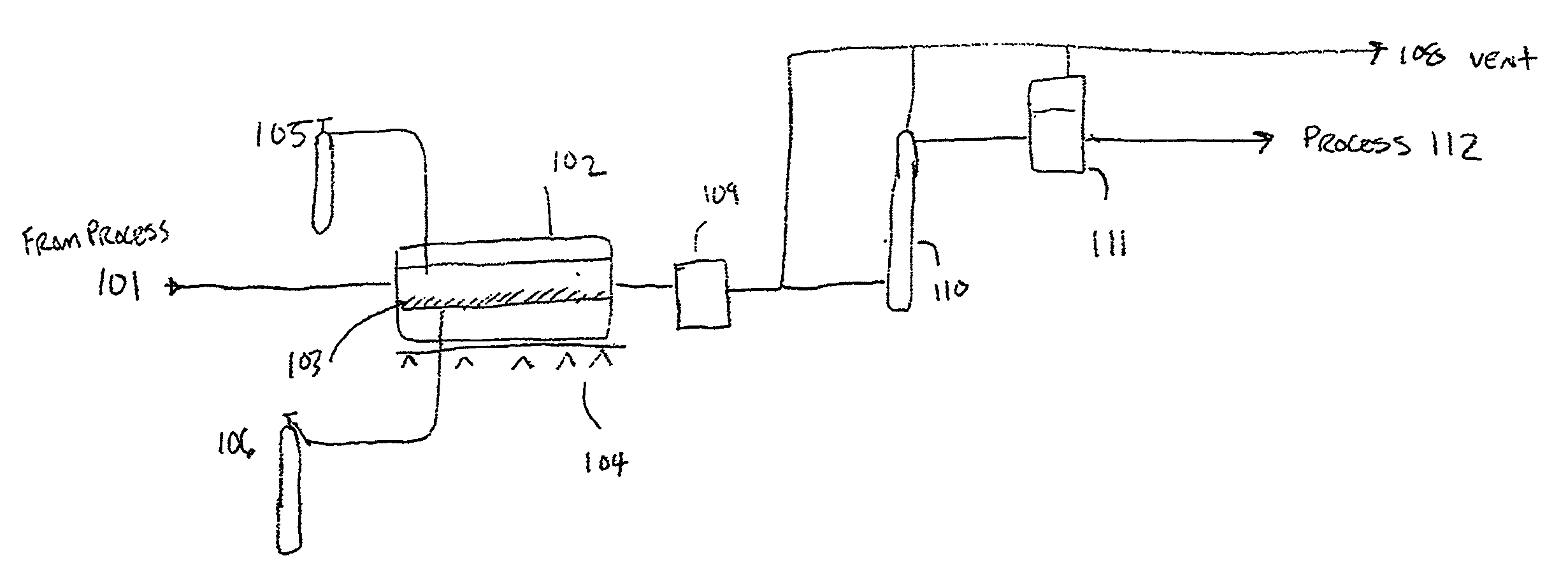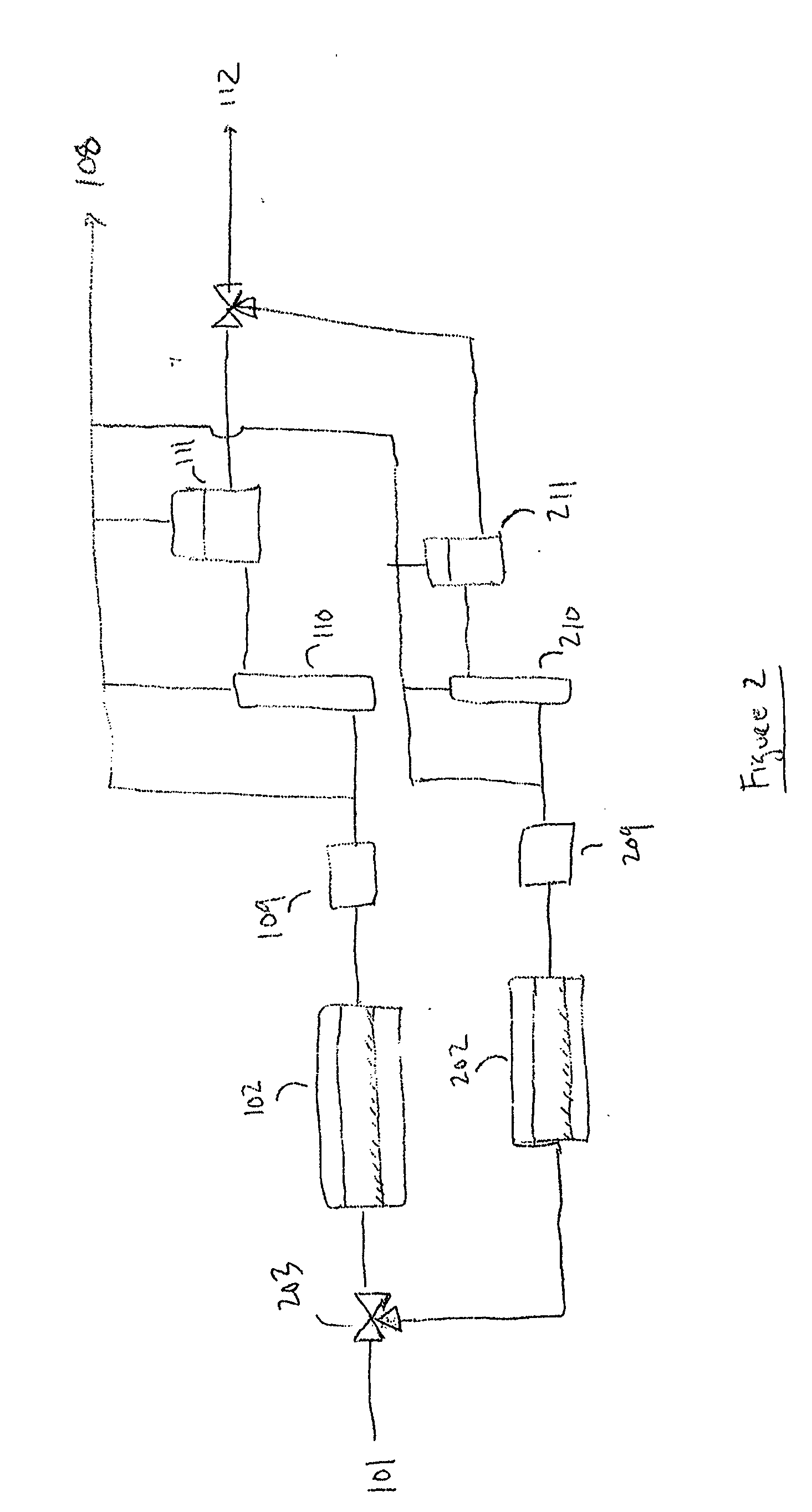Method for the recycling and purification of an inorganic metallic precursor
a technology of inorganic metallic precursors and recycling methods, applied in chemical/physical/physical-chemical processes, coatings, chemistry apparatuses and processes, etc., can solve the problems of loss of capacitance, inability to use then, and difficulty in releasing ruthenium for later re-use, etc., to achieve high purity
- Summary
- Abstract
- Description
- Claims
- Application Information
AI Technical Summary
Benefits of technology
Problems solved by technology
Method used
Image
Examples
example 1
[0065]Commercially available ruthenium (ruthenium powder under 200 micron mesh, obtained from the Sigma-Aldrich company) and ruthenium which was recycled according to an embodiment of the current invention were compared. Both samples were dried prior to the analysis in an N2 / He atmosphere for 2 hours at 120° C., and the specific surface area of each was examined through a BET analysis. The recycled ruthenium exhibited a specific surface area 18 times higher then that commercially obtained.
MaterialSpecific Surface areaCommercially available Ruthenium0.4 m2 / gRecycled Ruthenium7.1 m2 / g
example 2
[0066]The efficiency of the hydrogen reduction was examined by the difference in the cleaning capacity of ozone on two sputtered samples of ruthenium, one which had been reduced with hydrogen (“treated”), and one which had not (“untreated”). 2 samples of about 1000 A of ruthenium were deposited on a chromium layer (adhesion layer). The treated sample was first treated through a reduction reaction with hydrogen (4% H2 in nitrogen) at atmospheric pressure and at a temperature of about 200° C. This treatment lasted approximately 5 minutes. No such treatment was performed on the untreated sample. Both samples were then exposed to a flow of ozone (5% ozone / oxygen). An auger in depth analysis was then performed on both samples. FIG. 3 shows the results from the treated sample, while FIG. 4 shows the results of the untreated sample. FIG. 5 also shows the response time for the treated sample in the production of ruthenium tetroxide, after the flow of oxidizing (ozone) mixture was started.
example 3
[0067]Tests were conducted with a distillation column / cold trap to separate ruthenium tetroxide from residual oxidizing compounds generated according to embodiments of the current invention. A cold trap was provided whose temperature was set at −30° C., and a ruthenium tetroxide / ozone mixture was flown through the trap. In the instant example, propanol was mixed with liquid nitrogen to provide the low temperature. As the mixture was flown through the trap (which in this case was glass) a characteristic color change to yellow could be observed as the ruthenium tetroxide was collected. Due to the low boiling point of ozone and oxygen (−112° C. and −183° C. respectively), none of these molecules were trapped in the cooling device, thus assuring a high purification of the ruthenium tetroxide. The delivery of ruthenium tetroxide was then examined by UV spectrometer, and the generation of ruthenium tetroxide as a function of temperature was monitored. FIG. 6 shows how the flow of delivere...
PUM
| Property | Measurement | Unit |
|---|---|---|
| operating temperature | aaaaa | aaaaa |
| operating temperature | aaaaa | aaaaa |
| operating pressure | aaaaa | aaaaa |
Abstract
Description
Claims
Application Information
 Login to View More
Login to View More - R&D
- Intellectual Property
- Life Sciences
- Materials
- Tech Scout
- Unparalleled Data Quality
- Higher Quality Content
- 60% Fewer Hallucinations
Browse by: Latest US Patents, China's latest patents, Technical Efficacy Thesaurus, Application Domain, Technology Topic, Popular Technical Reports.
© 2025 PatSnap. All rights reserved.Legal|Privacy policy|Modern Slavery Act Transparency Statement|Sitemap|About US| Contact US: help@patsnap.com



